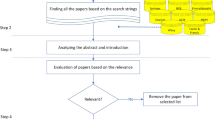Abstract
With an abundance of social network data being released, the need to protect sensitive information within these networks has become an important concern of data publishers. To achieve this objective, various notions of k-anonymization have been proposed for social network graphs. In this paper we focus on the complexity of optimization problems that arise from trying to anonymize graphs, establishing that optimally k-anonymizing the label sequences of edge-labeled graphs is intractable. We show how this result implies intractability for other notions of k-anonymization in literature. We also consider the case of bipartite social network graphs which arise from the representation of distinct entities, such as movies and viewers, patients and drugs, or products and customers. Within this setting we demonstrate that, although k-anonymizing edge-labeled graphs is intractable for k ≥ 3, polynomial time algorithms exist for arbitrary bipartite graphs when k = 2 and for unlabeled bipartite graphs irrespective of the value of k. Finally, in this paper we extend the study of attribute disclosure within the context of social networks by defining t-closeness, a measure of how effectively an adversary can determine sensitive information about members of a k-anonymous social network.





Similar content being viewed by others
Notes
We use permutation-invariant sequences rather than multisets to avoid the need to deal explicitly with multiplicities.
To see this, consider that any vertex-labeled graph can be transformed into a unique edge-labeled graph by labeling every edge (u, v) as {l(u), l(v)}.
References
Abdallah S (2011) Generalizing unweighted network measures to capture the focus in interactions. Soc Netw Anal Min 1(4):255–269
Aggarwal G, Feder T, Kenthapadi K, Motwani R, Panigrahy R, Thomas D, Zhu A (2005) Anonymizing tables. In: Proceedings of the international conference on database theory (ICDT), pp 246–258
Anshelevich E, Karagiozova A (2007) Terminal backup, 3D matching, and covering cubic graphs. In: Proceedings of the ACM symposium on theory of computing (STOC), pp 391–400
Backstrom L, Dwork C, Kleinberg JM (2007) Wherefore art thou r3579x?: anonymized social networks, hidden patterns, and structural steganography. In: Proceedings of the conference on World Wide Web (WWW), pp 181–190
Blocki J, Williams R (2010) Resolving the complexity of some data privacy problems. In: Proceedings of the international colloquium on automata, languages and programming, pp 393–404
Bonizzoni P, Vedova GD, Dondi R (2009) The k-anonymity problem is hard. In: Fundamentals of computation theory (FCT), pp 26–37
Cha M, Pérez J, Haddadi H (2011) The spread of media content through blogs. Soc Netw Anal Min 1–16. doi:10.1007/s13278-011-0040-x. Preprint
Chester S, Kapron B, Ramesh G, Srivastava G, Thomo A, Venkatesh S (2011) k-Anonymization of social networks by vertex addition. In: Proceedings II of the advances in databases and information systems (ADBIS), pp 107–116
Chester S, Srivastava G (2011) Social network privacy for attribute disclosure attacks. In: Proceedings of the advances in social networks analysis and mining (ASONAM), pp 445–449
Cormode G, Srivastava D, Yu T, Zhang Q (2010) Anonymizing bipartite graph data using safe groupings. Very Large Databases J (VLDBJ) 19(1):115–139
Fung BCM, Wang K, Fu AWC, Pei J (2008) Anonymity for continuous data publishing. In: Proceedings of the international conference on extending database technology (EDBT), pp 264–275
Gionis A, Tassa T (2007) k-Anonymization with minimal loss of information. In: Proceedings of the European symposium on algorithms (ESA), pp 439–450
Hay M, Miklau G, Jensen D, Towsley DF, Weis P (2008) Resisting structural re-identification in anonymized social networks. Proc Very Large Databases (PVLDB) 1(1):102–114
Kapron B, Srivastava G, Venkatesh S (2011) Social network anonymization via edge addition. In: Proceedings of the advances in social networks analysis and mining (ASONAM), pp 155–162
Li N, Li T, Venkatasubramanian S (2007) t-Closeness: privacy beyond k-anonymity and l-diversity. In: Proceedings of the international conference on data engineering (ICDE), pp 106–115
Liu K, Terzi E (2008) Towards identity anonymization on graphs. In: Proceedings of the ACM special interest group on management of data (SIGMOD), pp 93–106
Machanavajjhala A, Kifer D, Gehrke J, Venkitasubramaniam M (2007) l-Diversity: privacy beyond k-anonymity. ACM Trans Knowl Discov Data (TKDD) 1(1). doi:10.1145/1217299.1217302
Meyerson A, Williams R (2004) On the complexity of optimal k-anonymity. In: Proceedings of the principles of database systems (PODS), pp 223–228
Sweeney L (2002) Achieving k-anonymity privacy protection using generalization and suppression. Int J Uncertain Fuzziness Knowl Based Syst 10(5):571–588
Thompson B, Yao D (2009) The union-split algorithm and cluster-based anonymization of social networks. In: Proceedings of the ACM symposium on information, computer and communications security (ASIACCS), pp 218–227
Tripathy BK, Panda GK (2010) A new approach to manage security against neighborhood attacks in social networks. In: Proceedings of the advances in social networks analysis and mining (ASONAM), pp 264–269
Wu W, Xiao Y, Wang W, He Z, Wang Z (2010) k-Symmetry model for identity anonymization in social networks. In: Proceedings of the international conference on extending database technology (EDBT), pp 111–122
Yuan M, Chen L, Yu PS (2010) Personalized privacy protection in social networks. Proc Very Large Databases (PVLDB) 4(2):141–150
Zheleva E, Getoor L (2007) Preserving the privacy of sensitive relationships in graph data. In: Proceedings of the privacy, security, and trust in KDD (PinKDD), pp 153–171
Zhou B, Pei J (2011) The k-anonymity and l-diversity approaches for privacy preservation in social networks against neighborhood attacks. Knowl Inf Syst 28(1):47–77
Zweig K, Kaufmann M (2011) A systematic approach to the one-mode projection of bipartite graphs. Soc Netw Anal Min 1(3):187–218
Author information
Authors and Affiliations
Corresponding author
Rights and permissions
About this article
Cite this article
Chester, S., Kapron, B.M., Srivastava, G. et al. Complexity of social network anonymization. Soc. Netw. Anal. Min. 3, 151–166 (2013). https://doi.org/10.1007/s13278-012-0059-7
Received:
Revised:
Accepted:
Published:
Issue Date:
DOI: https://doi.org/10.1007/s13278-012-0059-7




